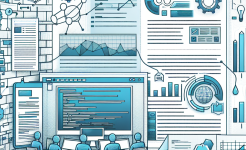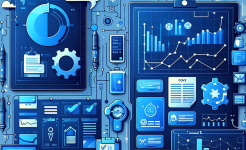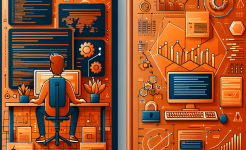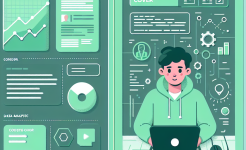The Kanban Board
The Kanban board is a visual tool that provides a clear overview of the project's progress. It consists of columns representing different stages of the workflow, such as "To Do," "In Progress," and "Done," with cards representing individual tasks. Each card contains relevant information about the task, including its description, assignee, and any dependencies. By using a Kanban board during stand-up meetings, team members can quickly see the status of each task and identify any bottlenecks or issues. This visual representation helps to improve transparency and accountability, as everyone can easily understand what needs to be done and who is responsible for it.
In addition to providing a snapshot of the project's progress, the Kanban board can also be used to facilitate discussions during stand-up meetings. Team members can refer to the board to explain the status of their tasks, discuss any challenges they are facing, and coordinate with others to address issues. The board serves as a common reference point, ensuring that everyone is on the same page and working towards the same goals. Moreover, the visual nature of the Kanban board makes it easier to spot trends and patterns over time, allowing the team to make informed decisions about resource allocation and process improvement.
Furthermore, the Kanban board can be integrated with other project management tools, such as issue trackers and collaboration platforms, to provide a seamless workflow. This integration allows for real-time updates and synchronization, ensuring that the information on the Kanban board is always accurate and up-to-date. By leveraging the power of the Kanban board, teams can streamline their stand-up meetings, improve communication, and increase overall productivity.
The Burndown Chart
The Burndown chart is another essential tool for stand-up meetings in agile development. It is a graphical representation of the remaining work in a project over time. The chart typically shows the total amount of work at the start of the project, the amount of work completed each day, and the projected completion date. By tracking the progress of the project in this way, the Burndown chart provides valuable insights into the team's velocity and helps to identify any potential risks or delays.
During stand-up meetings, the Burndown chart can be used to discuss the team's progress towards achieving the project goals. Team members can refer to the chart to report on the amount of work they have completed since the last meeting, as well as any obstacles they have encountered. This information can then be used to adjust the project plan and allocate resources accordingly. The Burndown chart also serves as a visual reminder of the project's timeline, keeping the team focused and motivated to meet the deadlines.
In addition to tracking progress, the Burndown chart can also be used to forecast the project's completion date. By analyzing the team's historical velocity and the remaining work, the chart can provide an estimate of when the project is likely to be finished. This information is valuable for both the team and the stakeholders, as it allows them to plan and make informed decisions. The Burndown chart can also be used to identify any trends or patterns in the team's performance, such as periods of high or low productivity. This information can then be used to implement strategies to improve the team's efficiency and effectiveness.
The Retrospective Template
Retrospectives are an important part of the agile development process, providing an opportunity for the team to reflect on their work, identify areas for improvement, and plan for the future. A retrospective template is a structured framework that helps to guide the retrospective session and ensure that it is productive and focused. By using a retrospective template during stand-up meetings, teams can effectively capture and analyze feedback, generate ideas for improvement, and create action plans to address any issues.
The retrospective template typically includes a series of questions or prompts that encourage the team to reflect on different aspects of their work, such as communication, collaboration, processes, and tools. These questions can be tailored to the specific needs and context of the project, ensuring that the retrospective is relevant and meaningful. During the stand-up meeting, the team can use the template to facilitate a discussion about their experiences and challenges, sharing their thoughts and ideas with the group. This open and honest communication helps to build trust and collaboration within the team, as well as identify areas for improvement.

In addition to facilitating the discussion, the retrospective template can also be used to document the team's findings and action plans. This documentation serves as a valuable reference for future retrospectives and helps to ensure that the team follows up on the identified areas for improvement. The template can also be used to track the progress of the action plans over time, providing a visual representation of the team's growth and development. By using a retrospective template, teams can make the most of their stand-up meetings and continuously improve their processes and performance.
The Communication Tool
Effective communication is essential for the success of any agile development project. During stand-up meetings, team members need to be able to communicate clearly and efficiently, sharing information about their work, challenges, and plans. A communication tool, such as a messaging platform or video conferencing software, can play a crucial role in facilitating this communication.
A messaging platform allows team members to send instant messages, share files, and collaborate in real-time. This tool is particularly useful for quick updates and informal discussions during stand-up meetings. Team members can use the messaging platform to ask questions, provide feedback, and coordinate with each other, without having to interrupt the meeting. The messaging platform also provides a record of the communication, which can be useful for future reference.
Video conferencing software, on the other hand, is ideal for face-to-face communication when team members are not in the same location. This tool allows team members to see and hear each other, creating a more personal and engaging meeting experience. Video conferencing software also supports features such as screen sharing and file sharing, which can be useful for presenting information and collaborating on projects. By using a communication tool, teams can overcome geographical barriers and ensure that everyone is able to participate in stand-up meetings effectively.
In addition to facilitating communication during stand-up meetings, the communication tool can also be used for other aspects of the project, such as remote collaboration, issue tracking, and knowledge sharing. This integration helps to streamline the project workflow and improve overall productivity. By choosing the right communication tool for the team's needs, teams can enhance communication, collaboration, and efficiency during stand-up meetings and throughout the project.
The Timeboxing Technique
Timeboxing is a technique used in agile development to manage time effectively and ensure that meetings stay focused and productive. During stand-up meetings, timeboxing can be used to limit the duration of each team member's update and ensure that the meeting does not exceed the allotted time. By setting a clear time limit for each update, team members are encouraged to be concise and focused, sharing only the most relevant information.
The timeboxing technique typically involves setting a specific time limit for each team member's update, such as two minutes. Once the time limit is reached, the team member must stop speaking and move on to the next person. This helps to keep the meeting on track and ensures that everyone has an opportunity to contribute. Timeboxing also helps to prevent discussions from going off on tangents and ensures that the meeting stays focused on the key issues.
In addition to setting a time limit for each team member's update, timeboxing can also be used to allocate time for other activities during the stand-up meeting, such as discussions, problem-solving, and decision-making. By setting clear time limits for each activity, the team can ensure that the meeting is structured and productive. Timeboxing also helps to create a sense of urgency and accountability, as team members know that they have a limited amount of time to complete their tasks.
By using the timeboxing technique during stand-up meetings, teams can improve efficiency, productivity, and focus. This technique helps to ensure that the meeting stays on track, everyone has an opportunity to contribute, and the team is able to make progress towards achieving the project goals.
In conclusion, stand-up meetings are a crucial part of agile development, providing a platform for communication, collaboration, and synchronization. By using the five essential tools discussed in this article - the Kanban board, the Burndown chart, the retrospective template, the communication tool, and the timeboxing technique - teams can enhance the productivity and value of these meetings. These tools help to improve transparency, accountability, communication, and efficiency, enabling the team to work together more effectively and achieve their project goals. By incorporating these tools into their stand-up meetings, teams can take their agile development practices to the next level and deliver high-quality products in a timely manner.
ARTICLE TITLE :Five essential tools for stand-up meetings in agile development ,AUTHOR :ITpmlib

















